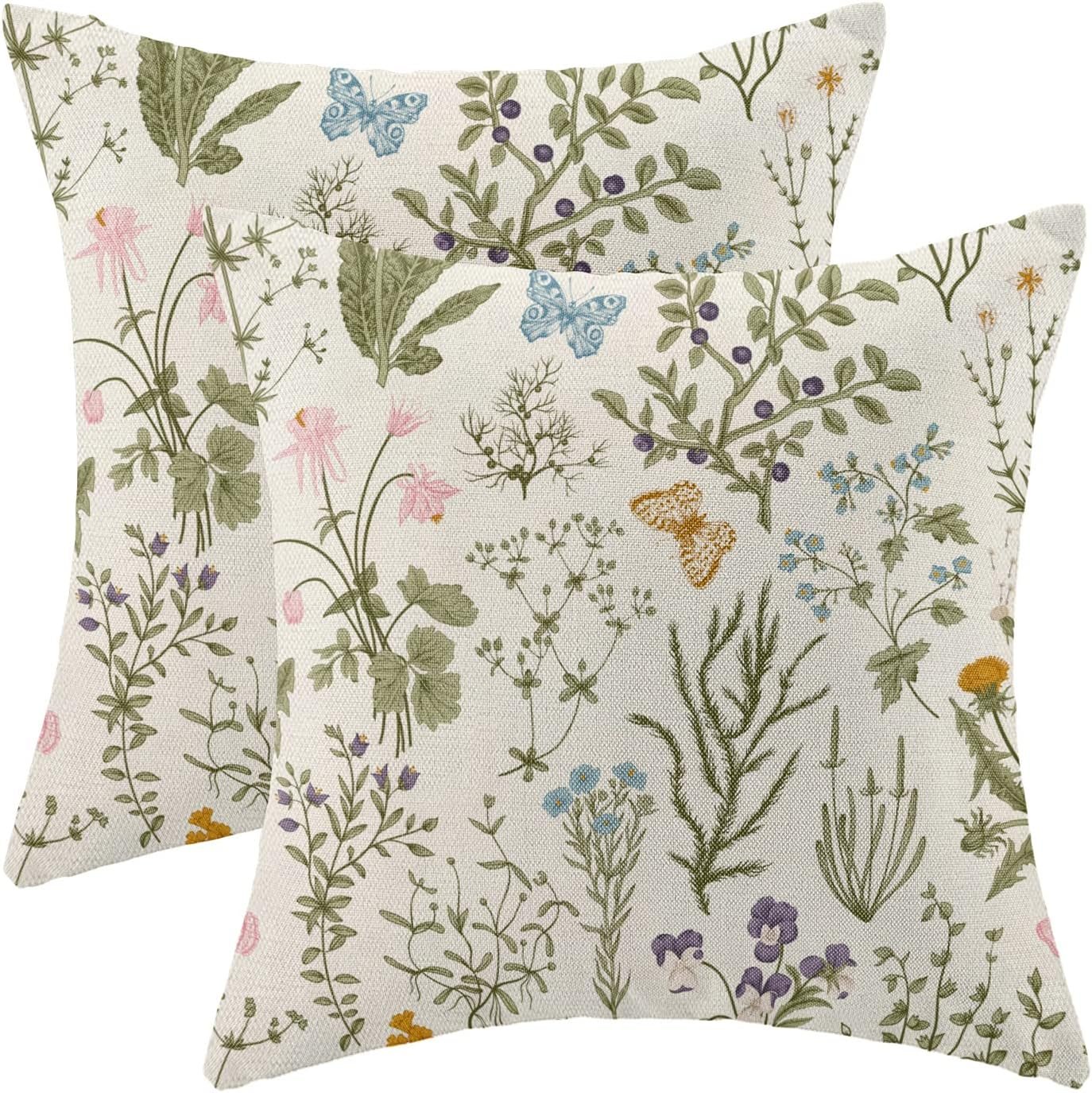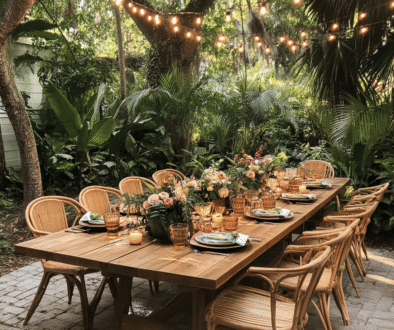How to Create a Stunning Easter Tree : Perfect for Spring
There’s something magical about the arrival of spring. After months of cold weather and bare branches, the world suddenly bursts with new life and color. As a longtime crafter and holiday enthusiast, I’ve discovered that bringing this seasonal transformation indoors creates the perfect backdrop for Easter celebrations. My absolute favorite way to do this? Creating a beautiful Easter tree.
What started as a simple decorating experiment years ago has become my family’s most cherished Easter tradition. In this guide, I’ll walk you through everything you need to know to create your own stunning Easter tree that will become the centerpiece of your spring celebrations for years to come.




What Is an Easter Tree?
An Easter tree (sometimes called a spring tree) is essentially a collection of branches—either bare or with spring buds—arranged in a vase or container and decorated with Easter ornaments. Think of it as a spring version of a Christmas tree, but with a lighter, airier feel that celebrates renewal and rebirth.
The tradition actually has European roots, particularly in Germany and Sweden, where “Easter trees” or “Påskris” have been part of spring celebrations for generations. I first discovered the concept while flipping through a vintage decorating magazine, and I’ve been making them ever since.

Why You’ll Love Having an Easter Tree
Before I dive into the how-to, let me share why creating an Easter tree has become such a beloved tradition in my home:
- It creates a stunning focal point. Unlike smaller Easter decorations that might get lost on a shelf, an Easter tree commands attention and ties all your spring decor together.
- It’s incredibly versatile. You can make it as simple or elaborate as you like. Some years, I keep mine minimalist with just a few carefully chosen ornaments. Other years, I go all out with dozens of decorations.
- It becomes a family heirloom. Like Christmas ornaments, Easter tree decorations can be collected over the years and hold special memories. My children now eagerly anticipate unpacking our Easter ornament collection each spring.
- It celebrates the season perfectly. Using natural branches brings the outdoors in and honors the spring revival happening outside your windows.
- It’s budget-friendly. The main component—branches—is often free if you gather them from your yard or local park (with permission, of course!).
Now, let’s get into the details of creating your very own Easter tree!

Choosing the Perfect Branches
The foundation of any great Easter tree is the branches you select. I’ve experimented with many different types over the years, and here are my favorites:
Flowering Branches
If you want a truly spectacular display, flowering branches are worth the extra effort:
- Forsythia offers brilliant yellow blooms that seem to embody sunshine itself.
- Cherry or apple blossoms create a soft, romantic look with their delicate pink and white flowers.
- Pussy willow provides interesting texture with its soft, fuzzy catkins.
- Magnolia branches make a bold statement with their large, dramatic flowers.
The trick with flowering branches is timing. I usually cut mine about two weeks before Easter and place them in water to force the blooms. It’s like watching a miracle unfold as the buds slowly open in the warmth of your home.
Non-Flowering Options
Don’t worry if you don’t have access to flowering branches. These alternatives work beautifully too:
- Birch branches have a lovely white bark that looks clean and fresh.
- Willow branches offer graceful, sweeping lines.
- Curly willow provides interesting twisted shapes that add dimension.
- Dogwood (the non-flowering red or yellow-twig variety) brings vibrant color to your arrangement.
My personal favorite is a mix of branches. Last year, I combined red-twig dogwood with pussy willow for a striking contrast of textures and colors.

Gathering and Preparing Your Branches
Here’s how I prepare my branches for their starring role:
- Timing matters. I gather branches 2-3 weeks before Easter, allowing time for any flower buds to open.
- Use sharp pruners. Make clean cuts at a 45-degree angle to help the branches absorb water more effectively.
- Choose branches of varying heights. I look for a range from 2-4 feet tall, creating a natural, asymmetrical arrangement.
- Consider the silhouette. Select branches with interesting shapes and forks that will provide good hanging points for ornaments.
- Condition the branches. When I get them home, I make a fresh cut at the bottom of each branch and immediately place them in water. For woody stems, I sometimes gently smash the bottom inch with a hammer to help with water absorption.
- Be patient. Placed in a bright room but out of direct sunlight, many branches will begin to leaf out or bloom within a week or two.

Selecting the Perfect Container
The vessel that holds your Easter tree contributes significantly to its overall look. Here are some options I’ve tried and loved:
- Large, clear glass vases showcase the beauty of the branches themselves and any decorative elements you might add to the water.
- Ceramic pitchers in pastel colors add a farmhouse touch.
- Galvanized metal buckets create a rustic, country feel.
- Vintage containers like old milk cans or antique crocks bring character and charm.
- Woven baskets (with a water-safe container inside) add natural texture.
Whatever container you choose, make sure it’s heavy enough to support your branches without tipping over. I learned this lesson the hard way when my first Easter tree took a tumble! If your vase is lightweight, add stones, marbles, or decorative pebbles to the bottom for stability.

Stabilizing Your Branches
Getting your branches to stand exactly as you want them can be tricky. Here are my tried-and-true methods:
- Floral foam (the wet kind) works wonders. Soak it in water, place it in your container, and insert the branches at the angles you prefer.
- A grid of clear tape across the top of a vase creates invisible support. I create a tic-tac-toe pattern with transparent tape, which provides individual openings for precise branch placement.
- Decorative stones or glass marbles not only look beautiful in clear containers but also help anchor the branches.
- Crumpled chicken wire stuffed into the container creates perfect pockets for positioning branches.
- Sand or decorative moss can fill the container and hold branches exactly where you want them.
I typically use a combination of methods. My current favorite is placing a block of wet floral foam in the container, then covering it with decorative moss for a finished look.

Decorating Your Easter Tree
Now comes the fun part—adorning your creation! The possibilities are endless, but here are some of my favorite Easter tree decorations:
Egg Ornaments
Eggs are the classic choice for Easter trees. I use:
- Blown-out real eggs that I’ve painted, dyed, or decoupaged. These are delicate but absolutely beautiful.
- Wooden eggs painted in springtime colors.
- Plastic craft eggs decorated with ribbons, washi tape, or paint.
- Paper-mache eggs covered with pretty papers or fabrics.
To hang them, I use a tiny screw eye inserted into the top of each egg and add pretty ribbon or string.
Beyond Eggs
While eggs are traditional, don’t limit yourself! I also love decorating with:
- Small bird figurines clipped to the branches.
- Butterfly ornaments made from paper, fabric, or feathers.
- Miniature flower garlands draped gently through the branches.
- Tiny paper flowers attached to the tips of branches.
- Lightweight nests filled with small speckled eggs.
- Easter-themed ornaments like bunnies, chicks, and carrots.
- Ribbon streamers in spring colors.
I’ve found that the most charming Easter trees feature a thoughtful mix of decorations rather than just one type. The combination of eggs, birds, and flowers tells the complete story of spring.

Creating a Cohesive Look
While I love exuberant decorations, I’ve learned that the most striking Easter trees maintain some design cohesion. Here are my guidelines:
- Choose a color palette. I usually select 3-4 colors that complement each other. Last year, I went with pale pink, mint green, cream, and touches of gold.
- Consider scale. Mix larger and smaller ornaments, but make sure everything is in proportion to your branches.
- Balance your decorations. I step back frequently while decorating to ensure the ornaments are evenly distributed throughout the branches.
- Layer your elements. Place some decorations deep within the arrangement and others at the tips of branches for dimension.
- Leave negative space. Don’t cover every inch—allow the beautiful structure of the branches to show through.
The joy of an Easter tree is that it can reflect your personal style. Mine tends to be colorful and whimsical, but I’ve seen gorgeous minimalist Easter trees with just a few carefully chosen ornaments.
Easter Tree Variations to Try
Over the years, I’ve experimented with different approaches to the basic Easter tree concept:
Tabletop Mini Trees
When space is limited, I create smaller versions using shorter branches in bud vases arranged down the center of my dining table. These make enchanting centerpieces for Easter dinner.
Outdoor Easter Trees
Last year, I decorated a small living potted tree on my porch with weather-resistant ornaments. It delighted neighbors and welcomed guests with festive spring spirit.
Themed Easter Trees
Sometimes I choose a specific theme, like:
- Woodland Easter with bird nests, mushroom ornaments, and natural elements
- Pastel Paradise using only soft, candy-colored decorations
- Vintage Easter featuring antique-style ornaments and old-fashioned imagery
- Monochromatic Magic using variations of just one color for a sophisticated look
Family History Trees
Perhaps my most meaningful variation is our family Easter tree, where we add one special ornament each year that represents something significant that happened. Looking at these trees is like reading a family story.

Making It a Tradition
What makes Easter trees truly special is how they can become a cherished tradition. Here’s how we’ve incorporated our Easter tree into our family’s celebration:
- Branch-gathering day has become an anticipated family outing. We take a special walk together to select the perfect branches, observing signs of spring along the way.
- Ornament crafting happens on a weekend afternoon before Easter. Each family member creates one new ornament to add to our collection.
- Tree-trimming night is marked on our calendar, complete with special spring treats and music.
- Adding special ornaments each year creates a growing collection of memories.
- Photo traditions capture our Easter tree each year, creating a lovely record of this evolving family custom.
My children now ask about our Easter tree weeks before I would have started planning it. It’s become as meaningful to them as our Christmas tree, marking the rhythm of our year and the changing of seasons.
Caring for Your Easter Tree
To keep your creation looking fresh throughout the Easter season:
- Change the water every few days to keep flowering branches healthy.
- Mist the branches occasionally if you notice buds or blooms drying out.
- Keep away from heat sources like vents, fireplaces, or direct sunlight, which can cause flowers to fade quickly.
- Add a penny or a drop of bleach to the water to prevent bacterial growth.
- Trim the ends of the branches if they begin to look less fresh.
With proper care, many Easter trees will last 2-3 weeks, carrying you through the entire Easter season.

Final Thoughts: Why Easter Trees Matter
In our busy modern lives, creating seasonal traditions helps us pause and mark the passage of time. My Easter tree has become more than just a decoration—it’s a ritual that helps my family connect with the natural world and with each other.
The process of selecting branches, watching them bloom, and carefully decorating them becomes a meditation on renewal and hope. In many ways, it embodies everything I love about Easter: beauty emerging from what appeared lifeless, color returning after winter’s monochrome, and the celebration of new beginnings.
Whether you create an elaborate display or a simple arrangement, I hope your Easter tree brings the same joy to your home that mine has brought to ours. There’s something undeniably magical about bringing branches inside to bloom and blossom under your care, then adorning them with symbols of the season.
Your Easter tree might just become your new favorite spring tradition, growing more meaningful with each passing year. Happy creating!
Have you ever made an Easter tree? I’d love to hear about your experiences and see pictures of your creations in the comments below!
If you love home decor and interior design as much as I do, check out these other articles I think you might like.
How to Make Enchanting Spring Flower Crowns for Easter





How to Make Adorable Fabric Carrots: The Perfect Decoration
March 30, 2025 @ 3:00 pm
[…] How to Create a Stunning Easter Tree : Perfect for Spring […]
How to Create Charming Egg Cup Succulents
March 31, 2025 @ 1:41 pm
[…] How to Create a Stunning Easter Tree : Perfect for Spring […]
How to Create a Stunning Moss-Covered Monogram for Easter
July 12, 2025 @ 7:20 pm
[…] How to Create a Stunning Easter Tree : Perfect for Spring […]
How to Create Beautiful Pressed Flower Easter Cards
July 12, 2025 @ 7:20 pm
[…] How to Create a Stunning Easter Tree : Perfect for Spring […]